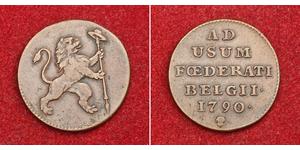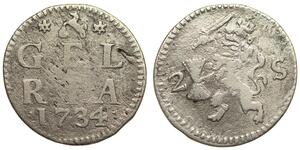20 Cent (售价 $7250.0)
1876. PCGS graded Proof 65. Lovely rainbow toning on both sides. Only 1,260 minted. Uniformly toned, the fields show blue iridescence that shines forth with the mirror background provided by the reflective field, while the devices on both sides are sharp-edged and lettering bold throughout. A resolute Gem Proof, in other words, once deserving a place in a high-quality collection of U.S. coins. The Twenty-Cent piece is one of many curious denominations issued by the United States government during 1800s. It was produced only in 1875 to 1878, one of the shortest series in numismatics. The congressional proposal that resulted in the creation of this denomination originated in 1874. A senator from Nevada, John Percival Jones, introduced a coinage bill for a twenty-cent coin. The year before, the congress had abolished three superfluous denominations, the two-cent coin, the three-cent silver, and the half dime, and these were disappearing from circulation after their abolition through the Mint Act of February 12, 1873. Jones' home state of Nevada was the center of the rich Comstock Lode and of silver and gold, even today, the state is known by the nickname of "The Silver State." He was probably working for these special interests, "bringing home the bacon" as it were to his constituents. Pop 23; 12 finer in 66 (PCGS # 5304) . Estimated Value $7,000 - 7,500. Categories: Twenty Cent Pieces
更多
售价

|
发布人:
anonymous 2015-02-27 |
|
||
|
||
|
||
您也许会对以下钱币感兴趣
2025-05-24
- New coin is added to 1 Liard 比利时 銅
1 Liard 比利时 銅
本组有 4 钱币 / 4 售价
⇑
Austrian Netherlands - Liard 1790 - Head
2025-06-20
-
新钱币

-600-300-0xgKbzbiFKUAAAFLw1ejlswL.jpg)

-300-150-8YjBwcI0c5YAAAEoZ1cQYyDp.jpg)
 English
English










